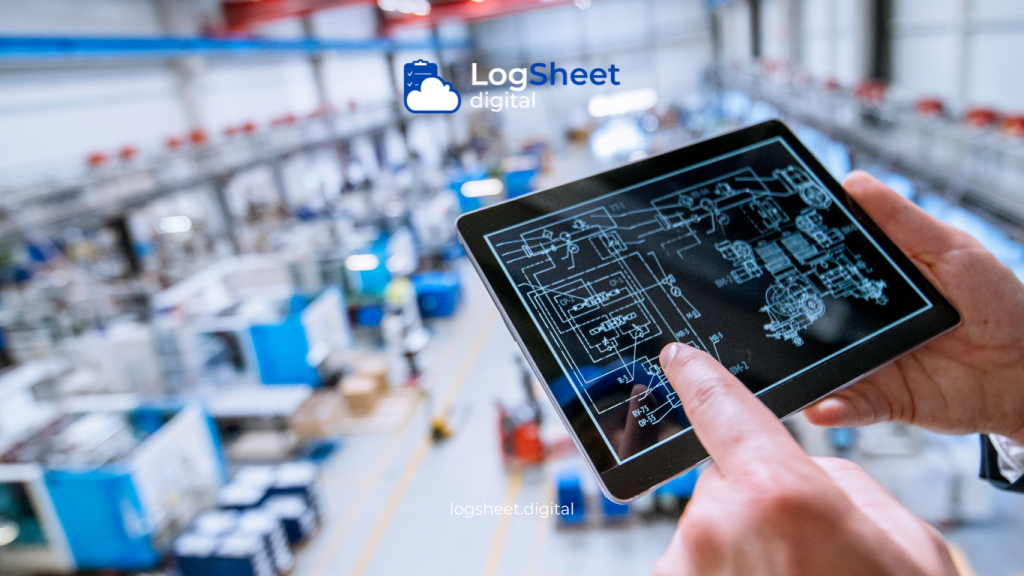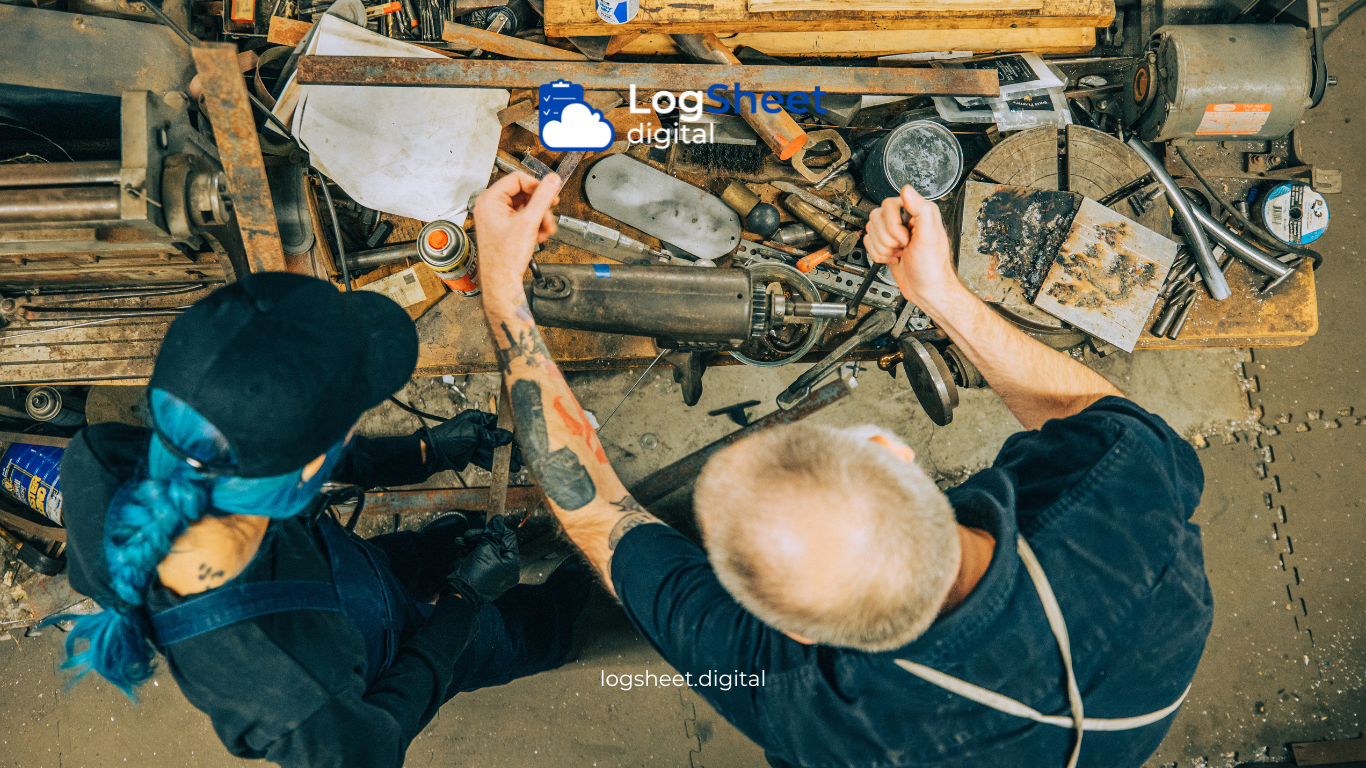Routine and predictive maintenance are two crucial aspects in maintaining the performance of equipment and systems across various industries. In today’s digital age, the use of digital logsheet has become an effective solution for enhancing maintenance management efficiency. This article will discuss the importance of digital logsheets, their benefits, implementation methods, and the challenges that might arise.
What Is a Digital Logsheet?

Read More: Implementing Digital Logsheets in Safety Inspections
A digital logsheet is a technology-based tool that replaces manual logsheets to record, monitor, and analyze maintenance data. This system allows for automatic and integrated data collection, minimizing human errors and improving accuracy.
Main Functions of Digital Logsheets
- Maintenance Data Recording: Automatically records routine and predictive maintenance activities.
- Real-Time Monitoring: Provides up-to-date information about equipment conditions.
- Data Analysis: Assists in data-driven decision-making through reports and predictive analysis.
The Role of Routine and Predictive Maintenance in Industry

Read More: Logistics Management System with Digital Logsheets
Routine Maintenance
Routine maintenance involves regular inspections and servicing to keep equipment running optimally.
- Examples: Lubrication, part replacements, and cleaning.
- Goal: Prevent failures before they occur.
Predictive Maintenance
Unlike routine maintenance, predictive maintenance uses data to determine when equipment needs servicing.
- Examples: Using sensors to detect changes in vibration or temperature.
- Goal: Reduce downtime and unplanned maintenance costs.
Benefits of Digital Logsheets in Maintenance Management

Read More: Digital Logsheets for Measurement and Industrial Safety
1. Operational Efficiency
- Saves time on recording and reporting.
- Reduces administrative workload.
2. Improved Data Accuracy
- Eliminates manual errors.
- Provides consistent and reliable data.
3. Better Monitoring
- The system sends automatic notifications for maintenance schedules.
- Ensures all maintenance activities are carried out on time.
4. Support for Predictive Analysis
- Historical data is used to predict maintenance needs.
- Reduces the risk of sudden equipment failures.
5. Enhanced Safety and Compliance
- Ensures compliance with industry standards and regulations.
- Records a trackable audit trail of activities.
Steps for Implementing Digital Logsheets

Read More: Digital Logsheets and Industrial Calibration Process Transformation
1. Evaluate System Requirements
- Identify equipment and processes requiring a digital logsheet.
- Choose a platform that aligns with your organization’s needs.
2. Train Employees
- Ensure staff understands how to use the system.
- Provide training to maximize the benefits of this technology.
3. Integration with Existing Systems
- Connect the digital logsheet with existing hardware or software, such as IoT sensors or ERP systems.
4. Implementation and Testing
- Start the implementation in one area as a pilot.
- Collect feedback and make improvements as necessary.
5. Ongoing Monitoring and Evaluation
- Monitor the system’s effectiveness.
- Update the software as required.
Challenges in Implementing Digital Logsheets

Read More: The Role of Digital Logsheets in Operations
1. High Initial Costs
- The initial investment in hardware and software can be significant.
- Solution: Choose a scalable platform that fits your budget.
2. Resistance to Change
- Some employees may struggle to adapt.
- Solution: Provide effective education and communication about the system’s benefits.
3. Data Security Issues
- Digital data is vulnerable to cyber threats.
- Solution: Implement security measures such as encryption and data backups.
4. Integration with Legacy Technologies
- Integrating the digital logsheet with existing manual systems may be challenging.
- Solution: Use compatible technology adapters.
Examples of Successful Digital Logsheet Implementation

Read More: Optimizing Maintenance Management through Digital Logsheets in the Workshop Industry
Case Study: Manufacturing Industry
A large manufacturing company implemented a digital logsheet for machinery maintenance. The results:
- Downtime reduced by 30%.
- Maintenance costs were reduced by 20%.
- Productivity increased by 15%.
Case Study: Energy Sector
An energy company used digital logsheets for turbine monitoring. Benefits included:
- Early detection of damage.
- Timely parts replacements.
Tips to Maximize the Benefits of Digital Logsheets

Read More: Improving Efficiency with Digital Logsheets: Maintenance Implementation Guide
- Choose a User-Friendly Platform
Ensure the user interface is intuitive for easy adoption by your team. - Use Data for Decision-Making
Analyze logsheet data to develop more effective maintenance strategies. - Update the System Regularly
Keep the system up-to-date with the latest features. - Engage All Stakeholders
Ensure that all teams, from operators to managers, understand the benefits of digital logsheets.
Conclusion

Read More: Digital Logsheets and Asset Management for Quality Improvement
The implementation of digital logsheets in managing routine and predictive maintenance brings significant benefits, ranging from operational efficiency to reduced equipment failure risks. With the right implementation steps, challenges can be minimized, and organizations can achieve better performance. This digital transformation is an investment for the future, supporting sustainability and competitiveness in various industrial sectors.






leave your comments